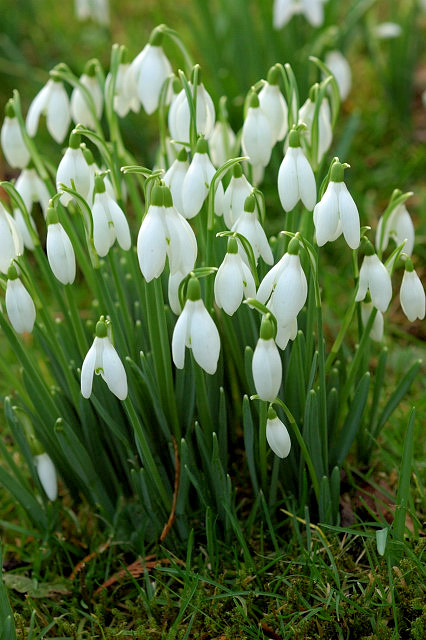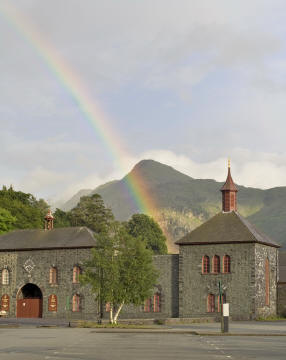|
February 2017
|
Photographers Resource |
ISSN 2399-6706 |
|
Issue No: 157 |
|
|
|
|
|
February, the month of love amongst the humans and
wildlife. For us humans, February 14th is Valentines Day, and the whole month is
the start of the new mating season for some birds like Heron's and Great Crested
Grebes. At the end of the month it is
Shrove Tuesday aka Pancake Day. Many parts of Britain celebrate this tradition
with Pancake Races or Tossing, a Skipping Festival, Cornish Hurling and a
Shrovetide Football game, with a difference. Take a look at the diary for
details of what's on. |
|
|
|
Throughout this month snowdrops will start to make
their way through the soil in woodlands, along roadsides and in gardens. They
are among the first plants to flower in the new year, along with Crocus, and
others. Their little white heads will pop through the ground, after hibernating
all summer, and will be seen bobbing just above the surface gently moving in the
winter breeze.
During this month and into the beginning of
March, Scotland has a Snowdrop Festival, where some of the larger houses and
estates open their gardens and woodlands for the public to explore and see these
little white dancing fairies.
In England some National Trust properties,
which have snowdrops in their grounds, also open up during this time for you to
visit. There are other houses, that do not normally open to the public, who open
to show off their snowdrop displays, as well as the
Snowdrop
Valley,
 at Wheddon Cross in Somerset. On a visit
you can take a winter stroll through their woodlands and see the carpet of white
below your feet swaying in the winter breeze. For somewhere near you, take a
look at
where to see and photograph snowdrops.
at Wheddon Cross in Somerset. On a visit
you can take a winter stroll through their woodlands and see the carpet of white
below your feet swaying in the winter breeze. For somewhere near you, take a
look at
where to see and photograph snowdrops. 
Before you go you might also like to take a look at
Macro or micro photography,
 for tips on taking things close up. These plants being quite tiny and maybe
moving will require a little thought and effort to capture them close up.
for tips on taking things close up. These plants being quite tiny and maybe
moving will require a little thought and effort to capture them close up.
Whilst in the woodlands listen out for the
Mistle Thrush and Song Thrush as they belt out their song to claim their
territories.
|
|
 |
|
 Snowdrops
Snowdrops
|
|
|
Whilst towards the end of the month a visit to
one of our many estuaries will see flocks of wader birds, such as ducks, geese,
Lapwings.... foraging for food on the sands and then grouping together as they
get pushed back to the shore by the incoming tide. If you're not near the sea or
an estuary then take a look at a local pond where you may see the multitude of
frogspawn laid by the females floating just below the surface of the water. Or
on larger ponds you may see Moorhens fighting for territory or the Great Crested
Grebes performing their elaborate courtship dance. |
|
 |
|
 Slate and not Gold is found at the end of this
rainbow, taken at the
National Slate Museum,
at Llanberis, in North Wales.
Slate and not Gold is found at the end of this
rainbow, taken at the
National Slate Museum,
at Llanberis, in North Wales.
|
|
February is also the time when the
Grey
Heron
 re-establish their pair bonds and rebuild their nests. Although a
large bird, they do nest in trees, in colonies called a Heronry. A single tree can have a
number of nests for different mating pairs and the process of collecting sticks
is an intriguing process to watch, as both birds seem to go off and collect new nesting material, but as they are
both away their neighbours will come
and take the new sticks for their own nests. During this process
they are very vocal and perform a display of bowing and wing spreading movements.
A heronry, I have visited in the past, is amongst the trees beside a large lake
at RSPB West Sedgemoor in Somerset.
re-establish their pair bonds and rebuild their nests. Although a
large bird, they do nest in trees, in colonies called a Heronry. A single tree can have a
number of nests for different mating pairs and the process of collecting sticks
is an intriguing process to watch, as both birds seem to go off and collect new nesting material, but as they are
both away their neighbours will come
and take the new sticks for their own nests. During this process
they are very vocal and perform a display of bowing and wing spreading movements.
A heronry, I have visited in the past, is amongst the trees beside a large lake
at RSPB West Sedgemoor in Somerset.If
you're not a fan of the winter and cold, getting out and about this time of year
can be a struggle. But there are lots of opportunities to get out, not
everything is closed for winter. It all starts off with the 2nd of February
being World Wetlands Day, so you could take the opportunity to visit a wetland
centre, such as the Wildfowl
and Wetlands Trust,
 who have a
number of locations around the UK, to get to see,
Swans, who have a
number of locations around the UK, to get to see,
Swans,
 Waders, Geese and other winter visitors before they head off back to their
summer breeding grounds.
Waders, Geese and other winter visitors before they head off back to their
summer breeding grounds.
It is also possible this time of year, when the
weather is bit wet with sunny intervals, to get some good rainbow photos with
deep dark colours, make sure you keep an eye open for the 'pot of gold' at the
end. Take a look at
How to photograph Rainbows
 for hints and tips. If you don't mind it a bit damp under foot then you may get
a chance to capture it whilst you're out visiting an
Abbey,
for hints and tips. If you don't mind it a bit damp under foot then you may get
a chance to capture it whilst you're out visiting an
Abbey,
 Castle,
Castle,
 Living History Museum
Living History Museum
 or
Waterfall.
or
Waterfall.
 |
|
|
What's New and Changed |
|
Articles Added and Updated
Recently |
|
Archives and Record Offices

Railway Photo
Charters

Macro or micro photography
 |
|
Locations Guides Added and
Updated Recently |
|
Hilbre
Island Lighthouse

Snowdrop
Valley, Wheddon Cross, Somerset
 |
|
|
We are continuing to upgrade this
website
It is taking
us some time, but in the background we are continuing to move from a Microsoft
based website to something much newer and more flexible, run on our Apple
systems. Our Windows computer is often difficult to start and should it
fail, before the new system is live, we will allow a gap of a month or two
to occur rather than waste time setting up outdated systems as a temporary
measure. So if we go missing for a while please check back regularly as we
will be back.
|
|
|
|
Let's
Explain How This Resource Works
Our most popular feature is the monthly
diary covering interesting and unusual things on, in and around the UK, in the
next two months. Our monthly magazine editorial page, from the beginning,
is still available via the 'recent editions' link. Everything that appears
in this magazine, or ever has,
is indexed in a number of ways, alphabetically, by topic, by
county, and often linked into sections.
All of our links are coded, if it's an external link
 or one of our own pages and the type of page it is. A key to the most popular
codes is at the bottom of the contents panel
on the left and clicking on any of the symbols will bring up a full
list. On any page, holding your mouse over one of these symbols tells you what it
means. If this is your first visit,
click here
or one of our own pages and the type of page it is. A key to the most popular
codes is at the bottom of the contents panel
on the left and clicking on any of the symbols will bring up a full
list. On any page, holding your mouse over one of these symbols tells you what it
means. If this is your first visit,
click here
 to find out how you might best use this site to help you find what you
are looking for.
to find out how you might best use this site to help you find what you
are looking for.
|
|